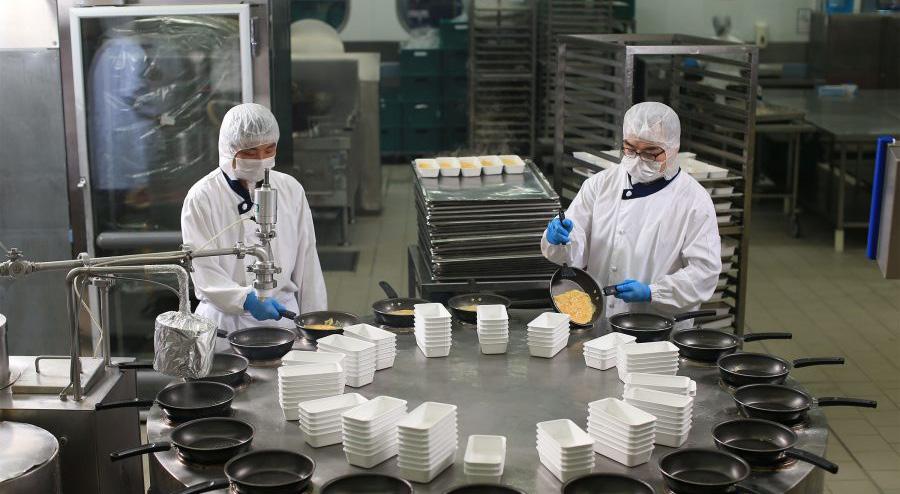
10 minute read
Sustainability News
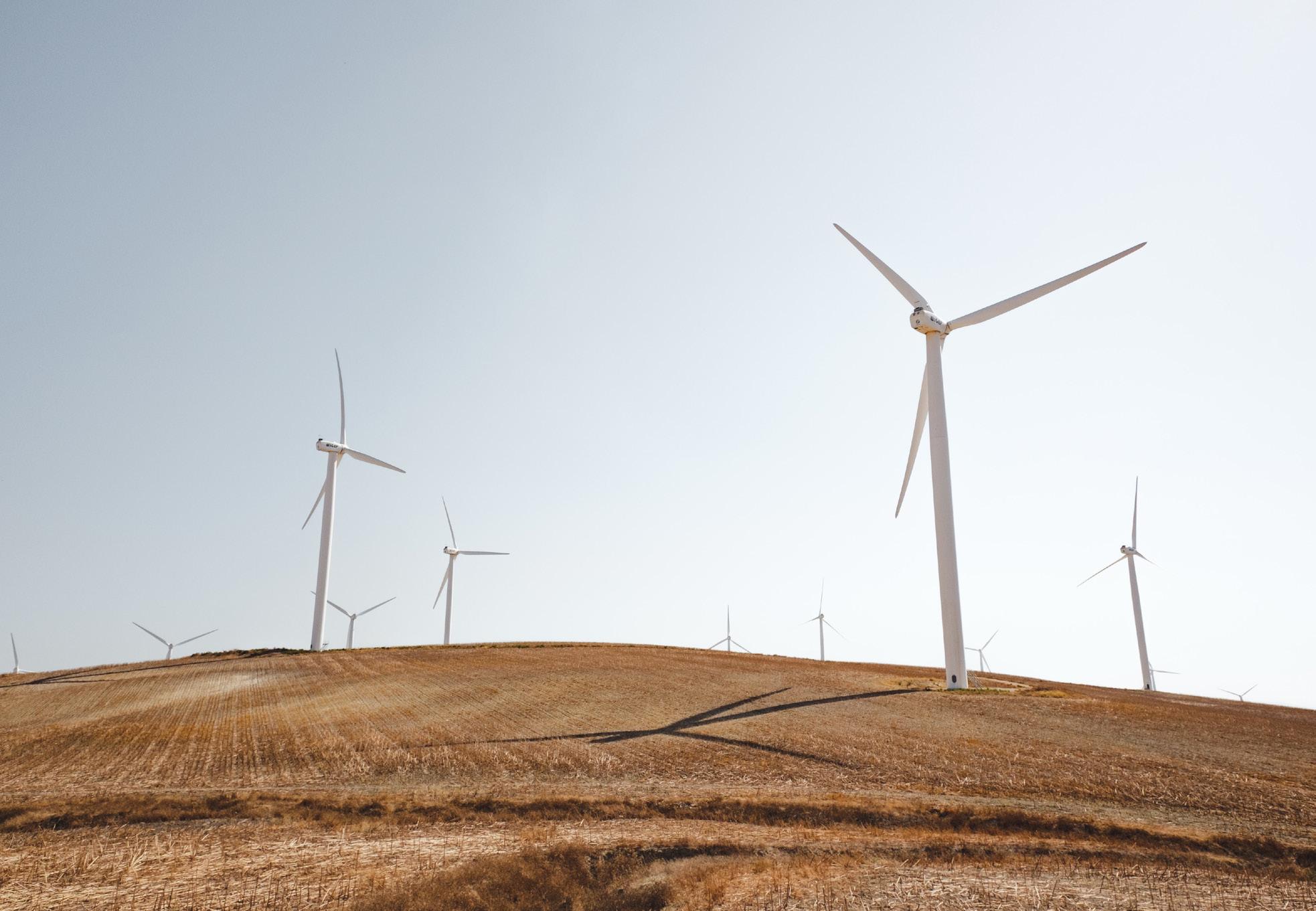
The immediate problem for airlines right now is obviously having to deal with covid-19. However there’s a wider long term issue in the background that will be with us long after the worst of the coronavirus has passed, namely that of climate change and sustainability.
Advertisement
As a result, we’ve included a round-up of sustainability and climate change developments. Look out as well for another special magazine that we’re releasing in June on Sustainable Aviation. If you are on the SimpliFlying / Airline Marketing Monthly subscriber list, you’ll receive it automatically. If not, you can sign up here. Airline Marketing Monthly | March 2020
Finnair to be carbon neutral by 2045
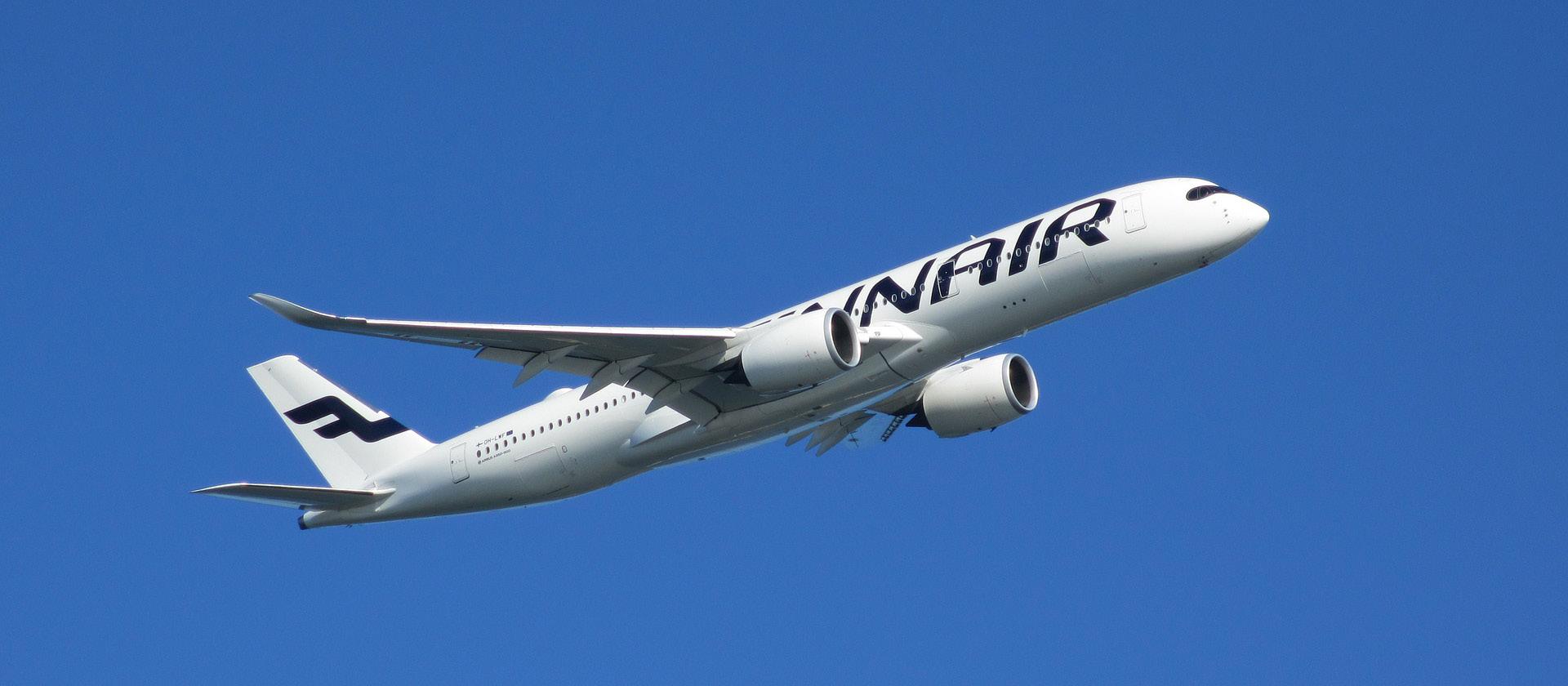
Finnair has announced a target of becoming carbon neutral by 2045, as well as halving its net emissions by 2025 from their 2019 level.
In line with around half of the world’s airlines, Finnair will be using carbon offset programmes. However, a key component of the announcement involved Finnish Sustainable Aviation Fuels (SAF) company, Neste.
The agreement between Neste and Finnair will see the Finnish airline ‘considerably increase’ Finnair’s use of Sustainable Aviation Fuel (the Neste press release isn’t specific about the %).
Neste says that Finnair will also offer ‘integrated ticket solutions which will include a sustainable aviation fuel option later this year and will match the contributions customers make to sustainable aviation fuel with its own purchases.’
This idea of getting customers to pay for SAF is something the Lufthansa Group does via it’s Compensaid programme. Lufthansa Group passengers can offset their flights either by investing in a Nicaragua reforestation programme, or by paying towards the purchase of SAF.
Of course, many passengers will ask why they should be buying aviation fuel in the first place, though it’s more expensive, isn’t this something the airlines themselves should be investing in? However, the difference between Compensaid and Finnair’s offer is of course that Finnair is matching customer contributions.
British Airways to cut single use plastics
Last year, British Airways customer Harry Riley, tried to get a petition going to get the airline to remove single use plastics by 2021, pointing out that on a flight to Singapore he had been presented with 22 plastic items, which for an A380 would translate into 10,318 single use plastic pieces on that one flight.
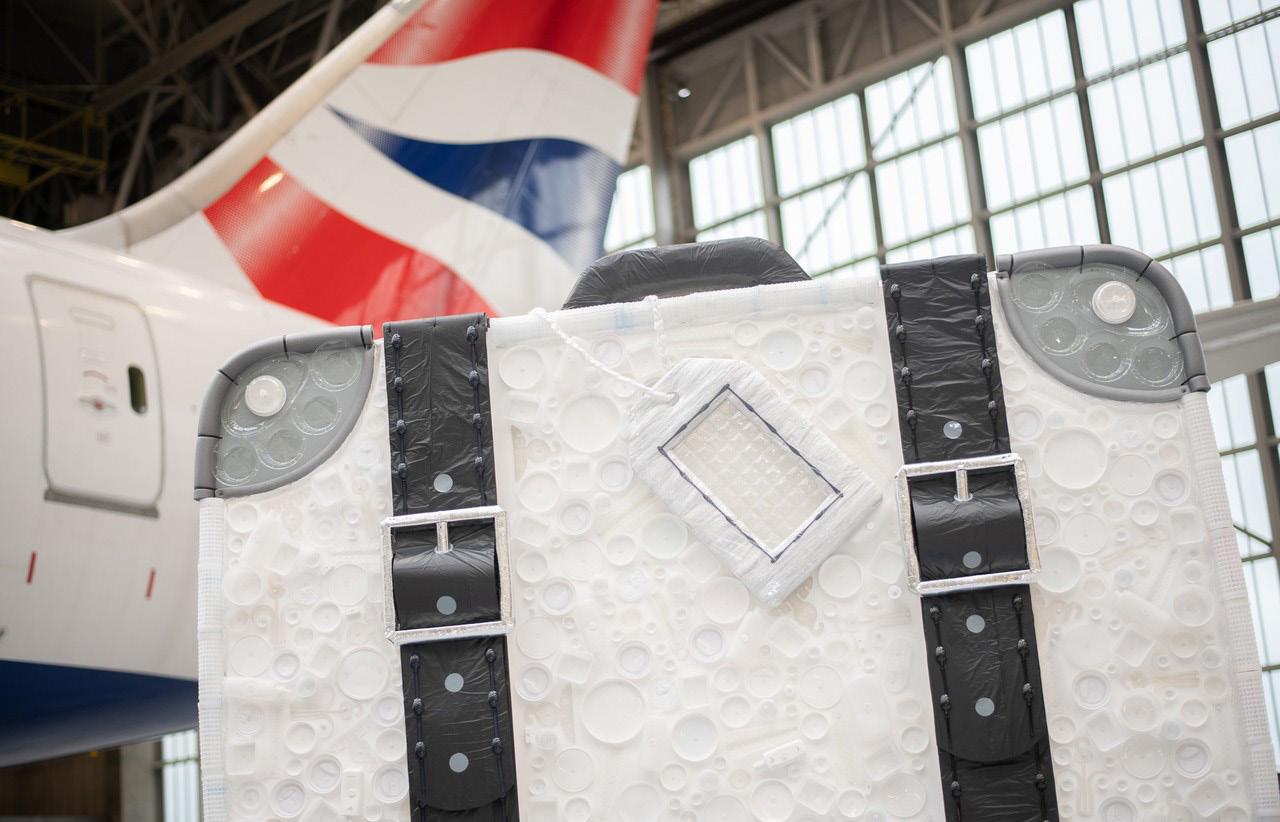
In his petition, Riley mentioned the examples of Air New Zealand, HiFly, Etihad and even Ryanair in taking a leadership role on the issue.
In an announcement made on February 26th, British Airways said that it would be removing more than 700 tonnes of single-use plastic on board its flights in 2020.
BA says that this amounts to more than a quarter of a billion individual items of plastic and equivalent to more than 30,000 suitcases full of single-use plastic,
more than the number of bags customers check in with the airline at Heathrow on an average day.
To mark the new target British Airways commissioned eco-artist Sarah Turner to create a giant suitcase made from a thousand pieces of waste plastic, including 160 spoons, more than a dozen plastic stirrers, drinks lids, plastic wrap, bubble wrap, catering dishes and covers and bottles.
The sculpture, which represents the 30,000 suitcases worth of plastic waste being removed, is currently on display at British Airways’ Headquarters near Heathrow.
Though BA has committed to removing a lot of plastic, it hasn’t signed up to a total no plastic target.
According to BA customer experience manager, Kate Tanner:
”Some potential replacement options may be heavier, which would then have an impact on the weight of the aircraft and therefore on our emissions, so we must ensure we are making the right choices on all replacements.” Airline Marketing Monthly | March 2020
Promoting sustainability AND prosperity - ATR shows how it’s done

Should airlines be promoting the benefits of aviation, in tandem with talking about sustainability? So long as they actually have something to say on the latter subject, absolutely.
IATA has done this for a number of years, by talking about ‘the business of freedom’. In the past we’ve felt that while the thinking behind these campaigns was good, the execution seemed at times a little two dimensional.
Enter regional aircraft maker ATR, which is giving a lesson on how it should be done.
ATR has built a micro-site, alongside a series of short YouTube videos showing how ATR aircraft are bringing economic benefits to communities in Asia-Pacific, while at the same time reminding viewers and readers that turboprop aircraft burn less fuel than regional jets.
For example, the video of Siargao in the Philippines, shows how everyone from local fishermen to small shops and cafes catering to tourists have benefitted since Cebu Pacific started serving the island with 4x daily flights.
It also makes the point that the service is important when it comes to bringing in medical supplies and staff, while highlighting the work of environmental charity SEA Movement, which is active on the island in areas such as plastic clean up.
The campaign is backed up by PR and media efforts. Stefano Bortoli, ATR’s CEO, has been on CNBC reinforcing the message that ‘turboprops are a responsible way of flying.’
Here in Europe, Ireland’s Stobart Air has taken that one stage further by actually producing seat back visuals showing how turboprops have a lower per passenger carbon footprint (and are quieter) than jets.
Overall this is a very good campaign, and it shows how the benefits and sustainability messages can be woven together.
The videos are just a few minutes in length and they aren’t filled with brand speak or some corporate voice over.
Instead, they focus on human stories and actual examples of how aviation is making a difference. With many of the world’s airports, and many island communities in particular, being only being reachable via turboprops, the campaign also effectively highlights one of ATR’s USPs.
Of course, the regional market is the one where electric aircraft could have the biggest medium term impact, becoming an even more sustainable option than turboprops. For example, last year Norway’s Wideroe announced that it was working with Rolls Royce with the very ambitious aim of replacing its 30 regional aircraft by the start of the next decade.
Air New Zealand - Project Green
Air New Zealand announced that it has diverted more than 890 tonnes of inflight waste from landfill two years on from the launch of Project Green, its glass recycling and product use waste reduction initiative.
The airline says that this is equivalent to the weight of five 777-300 aircraft.
41. Project Green, launched in late 2017, means that unused items from a flight service that previously may have gone
to landfill can be put onto a subsequent flight provided they come off the aircraft sealed and untouched.
Some of the more than 40 item types Project Green covers includes cans of soft drink, packets of cookies, boxed tea, coffee and sugar sachets and sealed napkins. Prior to the establishment of this process, even unopened items of these product types taken on board would have had to be incinerated. Airline Marketing Monthly | March 2020
Delta makes a $1 billion climate change commitment - why it matters
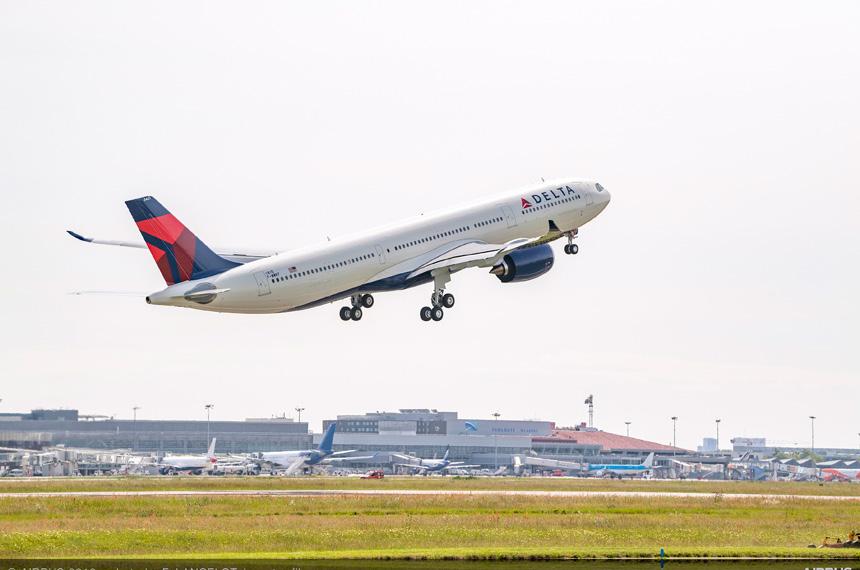
The world’s biggest carrier in terms of revenue and second biggest by passengers flown, is the latest airline to commit to becoming carbon neutral. In Delta’s case, this involves investing $1 billion in sustainability over the next decade.
The announcement has a number of different elements, combining fleet renewal (which is of course as much about economics as it is about sustainability), carbon removal and investment in sustainable aviation fuels.
You can read it here. However, here is SimpliFlying’s take on it, and why this announcement is very significant beyond the eye-catching $1 billion figure.
1. Delta gets the language right
2. It can’t just be about carbon offsetting
Airlines that are serious about sustainability don’t use the ‘g’ word, as they know it’s not credible. You may try and be environmentally responsible or sustainable, or (eventually) even carbon neutral, but if you burn greenhouse gases, you are not green.
In contrast, airlines like Ryanair, which got its knuckles wrapped by Britain’s Advertising Standards Authority, and Wizz Air, do make this claim. Ryanair is the tenth biggest polluter by emissions in Europe, and has been described as ‘the new coal’ in the press. Neither the travelling public or the media buy it.
What Delta calls carbon removal, seems mainly to be about carbon offsetting.
We are believers in these programmes, so long as they are only positioned as a short term measure, and not a get out of jail free card.
We also have concerns about projects that are for the most part about reforestation. Planting trees is an important carbon capture tool. However, it can take decades for a forest to grow and there have been cases where trees have been cut down before the projects have come to fruition.
As a result, it’s good to see that Delta is working on the development and production of sustainable aviation fuels (SAF) with Gevo and North-West Advanced biofuels.
3. Leadership is shown from the very top
Given the environmental pressures airlines are facing from climate change activists and increasingly also from the corporate sector, sustainability shouldn’t just be the preserve of the CSR department.
Rather, ownership needs to be taken from the very top. And here it’s significant that Delta boss Ed Bastian is fronting the intiative.
4. Sustainability is as much about culture, as it is about targets
In addition to Ed Bastian taking visible ownership, the airline has committed to a number of organisational principles such as transparency, innovation and evolution, in helping it reach its carbon neutral target.
This is crucial. We’ve published a post where we looked at what airlines could learn from oil giant BP’s carbon neutral announcement.
The key point was this: If you are going to be serious about sustainability, it has to actually be part of your company’s DNA.
5. This will help the Delta brand
Delta will see a return on its $1 billion investment in terms of brand goodwill and also bookings.
As easyJet said when it released its quarterly results, passengers felt more positively about the airline once they were aware of carbon offsetting, with an 11% increase in customers saying they will choose easyJet the next time they fly.
Then there’s the importance of the corporate travel market. Recently we published a post about how Microsoft becoming carbon negative should really make airlines sit up and take notice, as the technology giant is putting emphasis on its scope three emissions (the ones from its supply chain).
Where Microsoft leads, others will follow. An airline that shows it is taking action to mitigate its environmental impact, will we think have a real competitive advantage when it comes to landing large business travel contracts.
6. This could be the wake-up call the industry needs
Finally, this may be the wake-up call much of the industry needs, and well done to Delta for taking a leadership role here.
Delta’s announcement certainly isn’t perfect, there are questions for example whether Delta is paying too low a price per carbon ton, with Jeremy Bogiasky in Forbes commenting that Ed Bastian himself knows that this doesn’t go far enough.
Nevertheless, Delta is doing more than 95% of airlines, and is the most high profile in a small group of what you might call ‘doers’ - airlines that recognise that you have to be proactive when it comes to climate change, beyond just relying on CORSIA and a few operational efficiencies.
In that group we’d include easyJet, JetBlue, Norway’s Wideroe (which is working with Rolls Royce on an ambitious 2030 electrification target), while in the Middle East Etihad deserves an honourable mention for being streets ahead of just about every airline in the Middle East, Africa or the Far East.
In contrast, too many sustainability policies on airline corporate websites still consist of vague statements of intent. Worse, some industry leaders have reacted with annoyance when confronted with the flight shaming issue.
If one of your largest competitors is committing to actual action, then relying on warm words in press releases, or (e.g.) talking only about the new aircraft you are buying (aircraft you would have bought anyway), is no longer credible. Airline Marketing Monthly | March 2020







